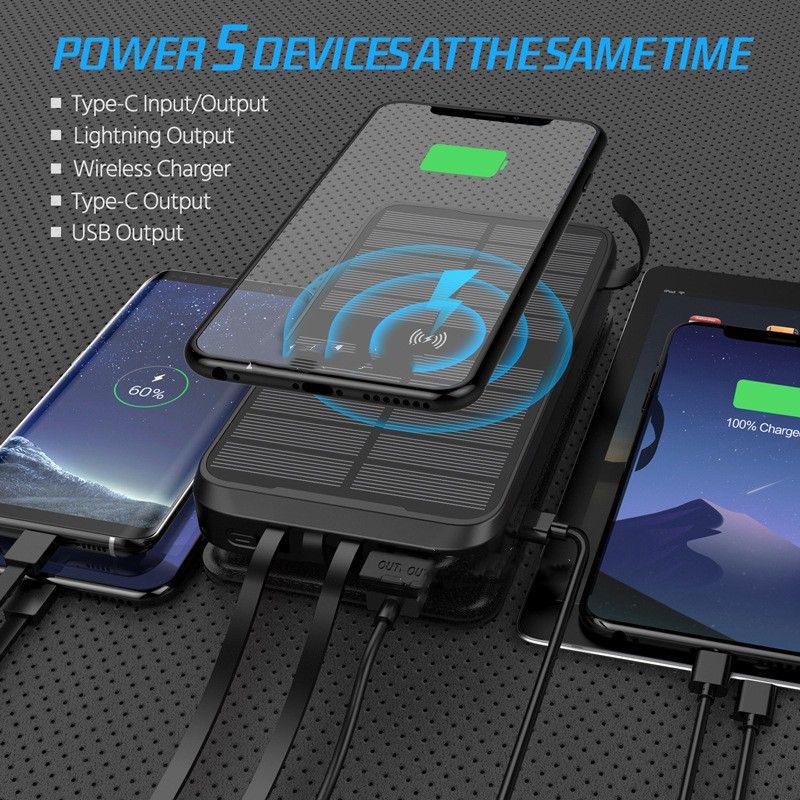Depending on the model, the solar panels of a mini PV system can be placed on house facades, on flat roofs or on the railings of small balconies, where they reliably produce environmentally friendly electricity.But is it even worth investing in such a system?We have checked how much electricity yield is possible and explain who can get the most money out of their balcony power plant.
Note: This article was verified for accuracy by priwatt expert Lukas Hoffmeier. Solar Wireless Camera

Anyone who asks themselves: “How much yield will a balcony power plant bring me?” should know that the answer to this question depends heavily on the location and the performance of the system chosen.Those interested can find information about various models, for example in our balcony power plant test.
Who e.g.For example, if a 600 watt balcony power plant is installed with a 30 percent inclination so that it faces south and is never in the shade, you can expect around 570 kWh of electricity.
With a balcony power plant with 800 watt solar modules and a 600 watt inverter, up to 750 kWh per year is possible.
Tip: In our balcony power plant yield calculator, the various yields can be calculated easily and free of charge online.
According to experts, for exampleFor example, in southern Germany the yield of a photovoltaic system is around 10 percent higher than in the north.
“Modern inverters offer internal monitoring, with which power generation at different time intervals can be easily viewed in the associated app.”
In our test of Yuma Flat 800, the balcony power plant for flat roofs generated around 0.35 to 4.01 kWh of electricity per day, depending on the weather, which means, for example.For example, in April there were almost 64 kWh of electricity, in May around 82 and in June even 98 kWh of electricity.(As of: 09/2023)
If the solar modules are optimally aligned, a standard 600 watt balcony power plant generates between 500 and 600 kWh of green electricity per year.
That's between 1.37 and 1.64 kWh per day.
For comparison: A four-person household consumes around 4000 kWh of electricity per year, with standby devices such as cell phone charging cables, internet routers or heating pumps alone having a basic consumption of 150 to 200 watts.A balcony power plant cannot be used to provide a completely self-sufficient electricity supply, but it does relieve the burden on the household budget.
Depending on the direction of the sun, a conventional 800 watt balcony power plant generates between 700 and 800 kWh of green electricity per year.
This corresponds to electricity production of around 1.92 and 2.2 kWh per day.
Discover easy-to-install complete set offers for beginners online now!
In Germany, the inverter of a balcony power plant is not allowed to feed more than 600 watts into the grid.The module output, on the other hand, can be higher, which is why many sets consist of two panels with 400 watts each in order to be able to deliver the maximum possible power output even in low sunlight.
Interesting to know: The limit of 600 watts for balcony power plants in Austria has now been overturned and 800 watt balcony power plants will soon be permitted in Germany too.This means: Not only can the solar panels have a corresponding amount of power, but the inverter can also feed 800 instead of 600 watts into the house network.
Our 800 balcony power plant comparison provides more information.
The links marked with * are so-called affiliate links.If a purchase is made via such a link, we will receive a commission.There are no additional costs for you.
Mariella Wendel has been part of the home&smart editorial team since 2017 and tested many Alexa devices before their market launch in Germany.Today she regularly tests new PV solutions such as balcony power plants and robotic lawnmowers to ensure they are suitable for everyday use.She is also a big fan of smart gadgets.
Experience all smart home products and devices with voice control on Amazon at unbeatable prices.
Find current smart home offers on Amazon and save!